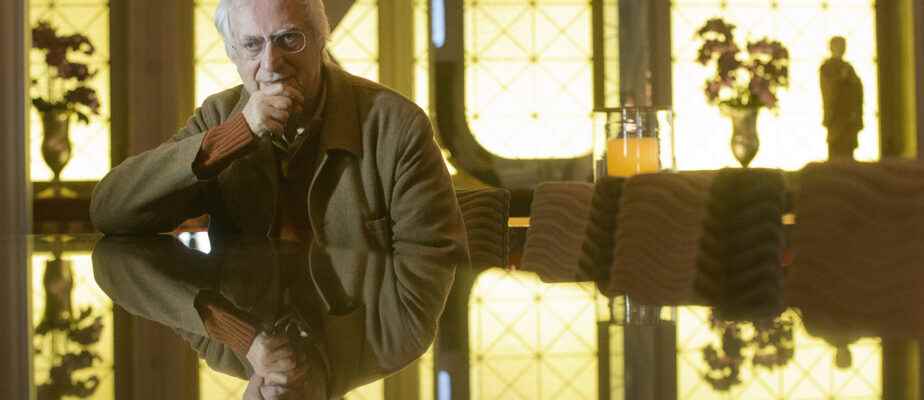As part of the Ciné-Histoire series, the Cinéma du Musée is showing five feature films by Bertrand Tavernier, presented from their historical perspective. Of Let the festivities begin until Captain ConanPassing by The judge and the murderer, Wipe And Life and nothing elsethese works have the particularity of evoking the filmmaker’s passion for History, but also for the secondary characters who wrote it.
A “royal” trio

PHOTO PROVIDED BY PRIMA FILM
Philippe Noiret, Marina Vlady, Jean Rochefort and Monique Lejeune in Let the festivities beginthe second feature film by Bertrand Tavernier.
Let the festivities begin inaugurates this Tuesday a program entitled Under the watchful eye of Bertrand Tavernier, presented as part of the Ciné-Histoire series. Winner of the César for best director in 1976, this second feature film by Bertrand Tavernier, released a year later The watchmaker of Saint-Paul, also features a “royal” trio made up of three companions, Philippe Noiret, Jean Rochefort and Jean-Pierre Marielle. Set in the XVIIIe century, the story evokes the time when, Louis XV being a minor when Louis XIV died, the Regency was ensured by the Duke of Orléans, a notorious debauchee who would be the subject of a plot. Pascal Bastien, professor in the history department at the University of Quebec in Montreal (UQAM), will lead a discussion after the screening.
February 7 at 6:30 p.m.
Philippe Noiret, exceptional actor

PHOTO PROVIDED BY THE CINEMATHEQUE QUÉBÉCOISE
Starring Philippe Noiret and Michel Galabru, The judge and the murderer won three César trophies in 1977, including that of best actor, awarded to Michel Galabru.
In The judge and the murderer takes place a summit meeting between Philippe Noiret and Michel Galabru. The latter, winner of the César for best actor in 1977, probably found his greatest role in cinema there. Inspired by a true story, this third feature film by Bertrand Tavernier, set in 1893, relates the efforts of a judge to send a notorious assassin to the guillotine. In 2007, shortly after the death of Philippe Noiret, Bertrand Tavernier declared this to The Press “Obviously, Michel Galabru’s acting in the role of the assassin is more spectacular, but that of Philippe in the role of the judge is just as remarkable. The performances of Philippe Noiret in my first three films – in which he goes from the daily life of the XXe century to a prince of the blood of the XVIIIethen to a 19th century bourgeoise, could also be studied by many actors. Regardless of the framework in which he moved, Phillipe squarely took root in the place mentioned. »
February 23 at 6:30 p.m.
This unloved film became cult

PHOTO PROVIDED BY THE CINEMATHEQUE QUÉBÉCOISE
Philippe Noiret and Isabelle Huppert in Wipea film by Bertrand Tavernier
By transposing into Wipe the plot of the novel by Jim Thompson Pop. 1280 In the French colonial Africa of the 1930s, Bertrand Tavernier crafted a drama punctuated with biting black humor, populated by despicable people. When they read the script, the actors – Philippe Noiret in the lead – would even have been destabilized by these characters “who were species of animals who jumped on top of each other, who made love, who ate, hid themselves , were lying”. Although the qualities of the film were quickly recognized by professionals (it was cited 10 times at the Césars and finalist for the Oscars in the category of best foreign language film), Wipe was not very well received when it was released in 1981. However, it achieved cult status in the following years and is now one of the filmmaker’s key works.
March 30 at 6:30 p.m.
The Great War, twice…
-

PHOTO PROVIDED BY ALLIANCE VIVAFILM
Sabine Azéma and Philippe Noiret in Life and nothing else, a film by Bertrand Tavernier. In 1990, this film earned Philippe Noiret the César for best actor.
-

PHOTO PROVIDED BY FRANCE FILM
In 1997, Captain Conan won Bertrand Tavernier the César for best director, and Philippe Torreton the César for best actor.
1/2
Faithful to his approach of telling History through peripheral characters, Bertrand Tavernier first had the idea of Life and nothing else by discovering with horror that approximately 350,000 disappeared were never traced during the 1914-1918 war. Philippe Noiret – who was then in his seventh film with the filmmaker – slips into the skin of a commander who, two years after the war, meets a woman (Sabine Azéma) looking for the man she loves and whose no more news. Life and nothing else will be worth to Noiret, who was also Cinema Paradiso the same year, the César for best actor in 1990. Seven years later, Bertrand Tavernier will dwell on another chapter in the history of the First World War with Captain Conan. This adaptation of a novel by Roger Vercel is also distinguished by the performance of Philippe Torreton, also awarded a César, remarkable in the skin of a captain who called himself a warrior rather than a soldier.
Life and nothing else : April 27 at 6:30 p.m. Captain Conan : May 25 at 6:30 p.m.
The Cine-History series
Under the watchful eye of Bertrand Tavernier is the fourth program presented by the Cinéma du Musée as part of a series entitled Ciné-Histoire. Launched by Pascal Bastien, professor in the history department at UQAM, also a cinephile who sees historical cinema as a way of writing history, the Ciné-Histoire program has so far focused on in Stanley Kubrick’s cinema, in the XVIIIe century, as well as justice over the years. Each screening is preceded by a presentation and followed by a discussion with a historian. “These programs always consist of five films, specifies Pascal Bastien. For Bertrand Tavernier, we could have chosen at least eight, but the feature films we present are among his best. And the quality of the projections will be impeccable. »
Under the watchful eye of Bertrand Tavernier. Ciné-Histoire, from February 7 to May 25, at the Cinéma du Musée.
